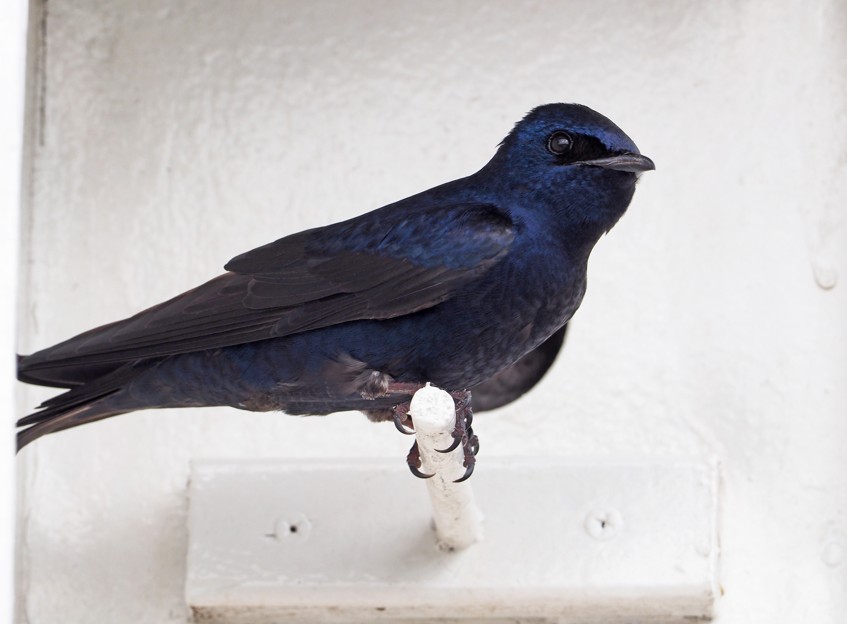Why Purple Martins have enchanted us for thousands of years
Published 9:15 am Sunday, July 27, 2025
A well-beloved backyard bird in our region is the Purple Martin. This large, darkly colored sparrow is a commonly seen visitor in parks, yards, and waterways, especially when there is a Purple Martin house nearby. In fact, these birds are so commonplace that they are often taken for granted, but in fact the Purple Martin is a very interesting species.
Purple Martins spend the winter in South America and are one of the species that return earliest in the spring. They reach Texas in February, with a few eager beavers even arriving in January. The males tend to arrive first so that they can scope out nesting territories and bicker with the other Martins about who gets what spot. Females arrive a little later and will choose the male and house that suits them best.
Purple Martins happily take up residence in Purple Martin houses. These structure usually look like little apartment buildings on poles, provided by thoughtful human landlords. Before the apartments came into style, many people provided homes for the birds in the form of hollowed out gourds, hung on poles or trees. In lieu of a human-made house, the Purple Martins can make their nests in hollow trees or woodpecker holes.
Trending
A Purple Martin’s nest is a mass of leaves, grass, twigs, and feathers shoved into the nesting crevice. They will sometimes put mounds of mud on the edge of the hole to keep the eggs from rolling out. The females incubate their nests alone, without the help of the males.
In late summer, when the breeding season has ended, the Purple Martins will gather in huge colonies for weeks before they eventually migrate South once again. These pre-migratory colonies can consist of tens of thousands of martins, roosting in trees and then swarming in the evening to capture insect prey.
This phenomenon is easily witnessed in our area! Houston Audubon even hosts “Purple Martin Watch Parties” in the late summer to observe the massive colonies in flight. Male Purple Martins are a dark, iridescent navy-blue color, with even darker wings. The females look similar, but have a light grey belly, chest and cap. They can be easily spotted amongst other flying swallows, as they are the largest swallow species in our area (about 8 inches). They swoop and dive like the other swallows do, catching insects such as dragonflies, wasps, beetles, and flies.
Purple Martins have enchanted us for thousands of years with their graceful swooping flights, happy song, and glittering feathers. It’s not every species that can charm the humans into building their homes for them.
Celeste Silling is the education and outreach manager at the Gulf Coast Bird Observatory. The GCBO is a nonprofit organization dedicated to saving the birds and their habitats along the entire Gulf Coast and beyond into their Central and South America wintering grounds.







